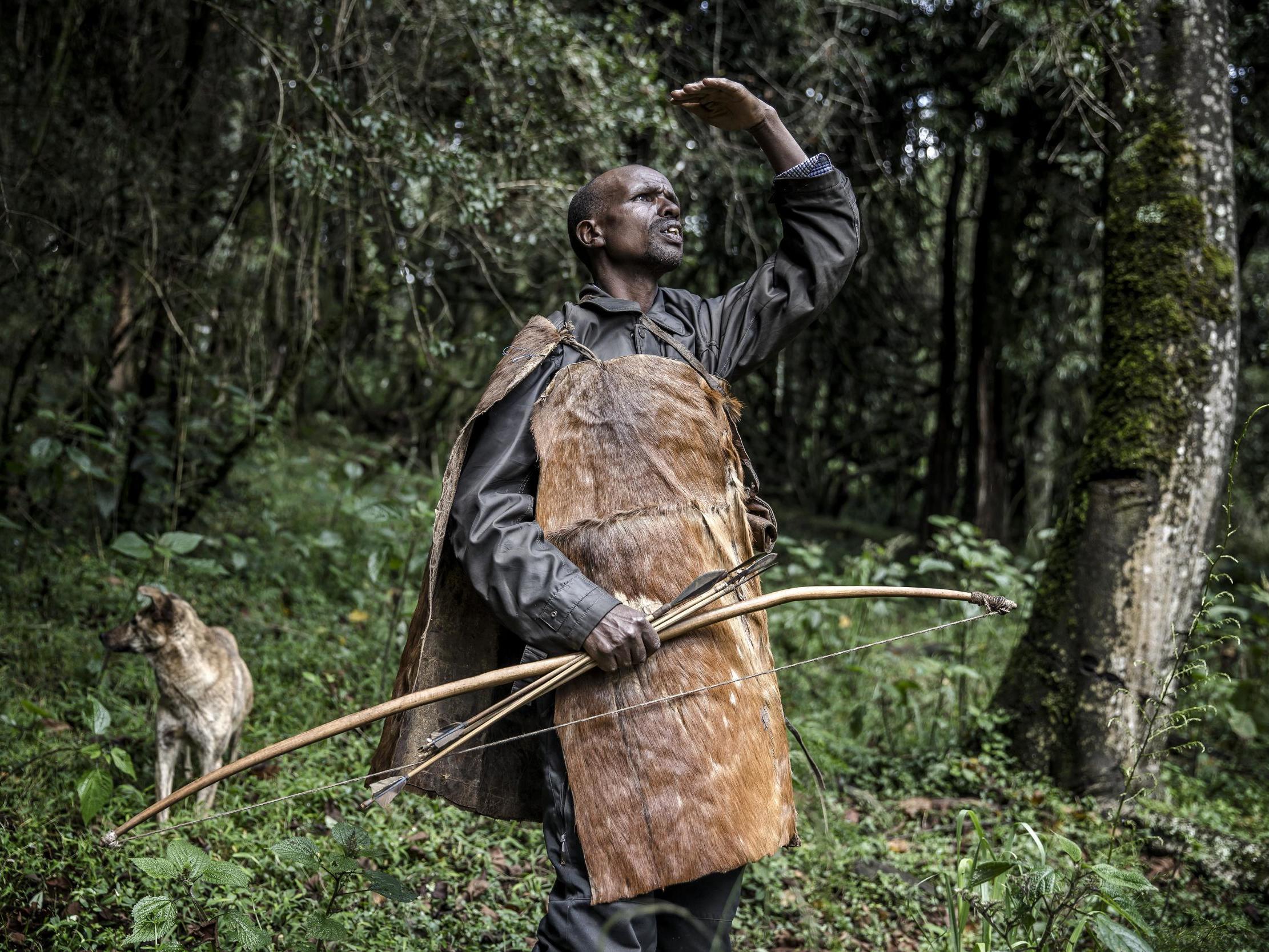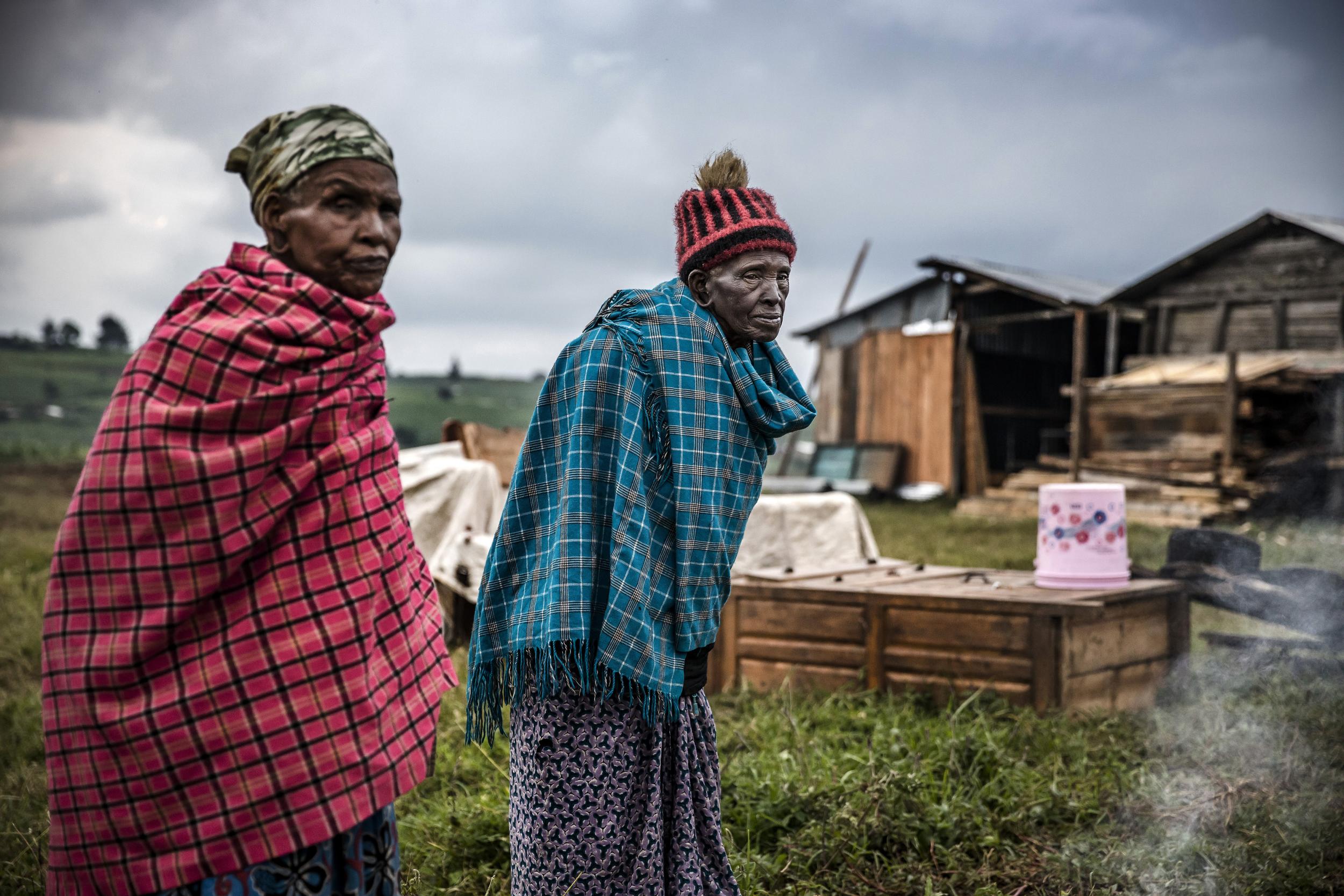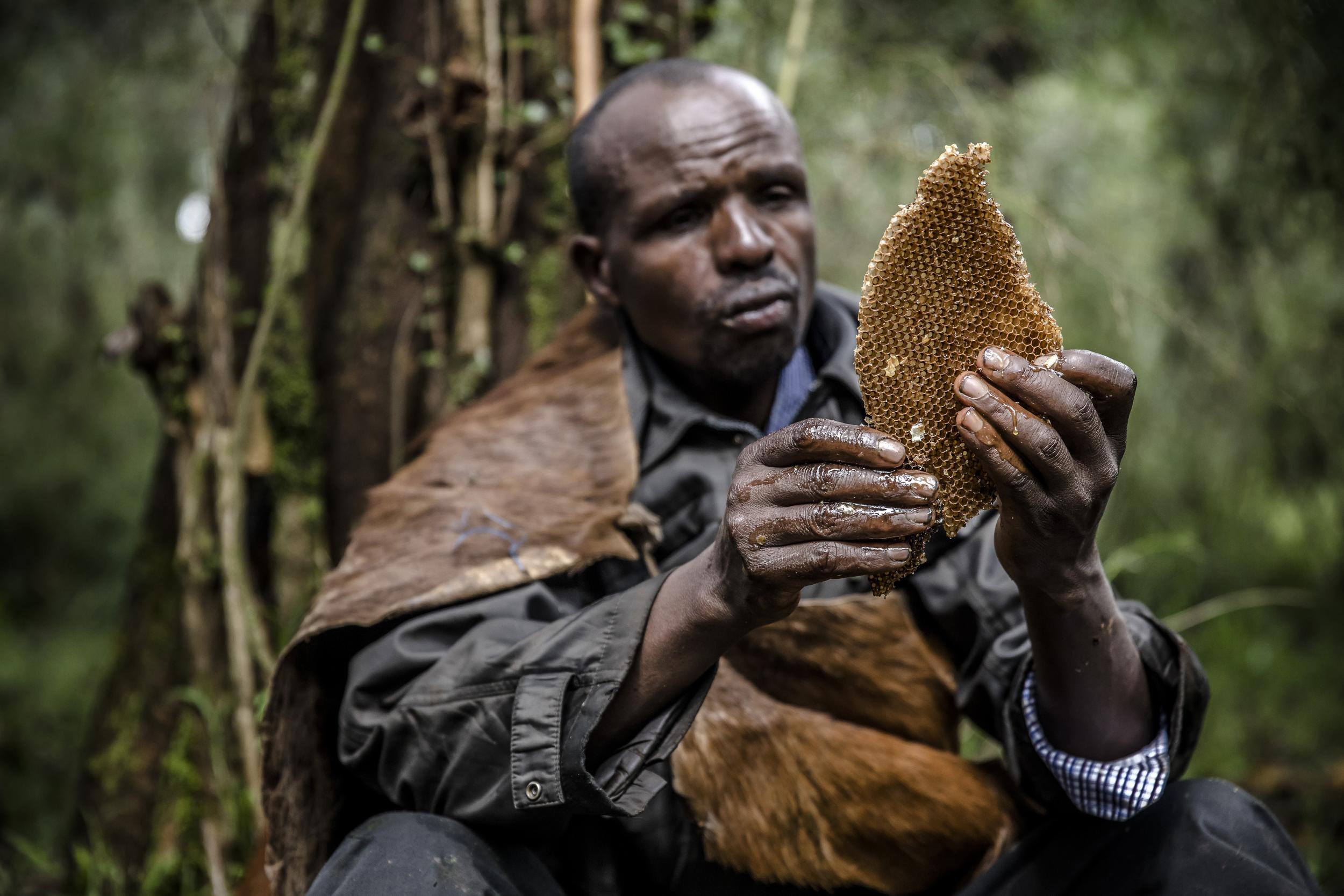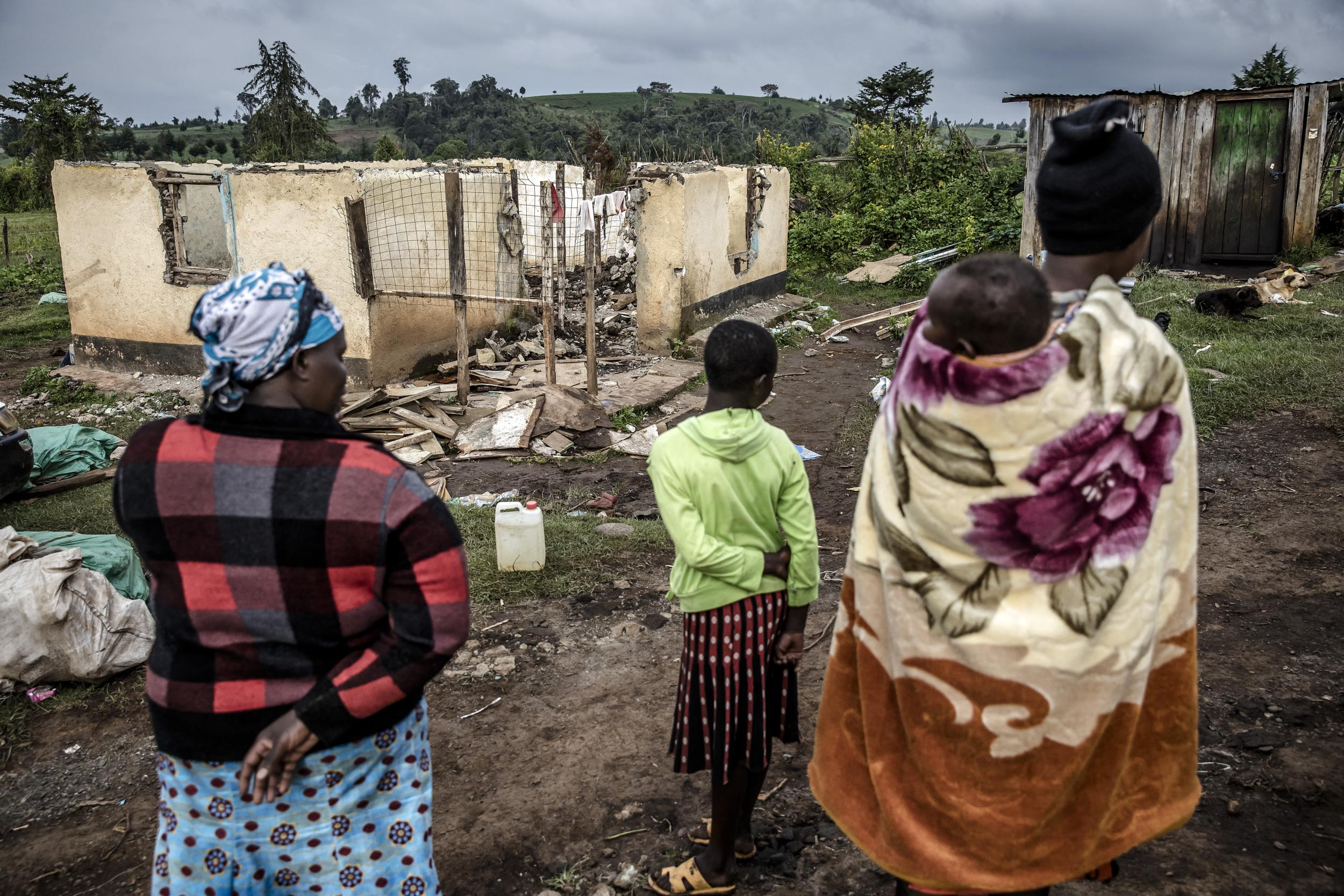‘We hope that our land will become ours again’
Max Bearak meets the indigenous Ogiek who claim the Mau Forest in Kenya as their ancestral home but now face eviction at the hands of a hostile government

Your support helps us to tell the story
From reproductive rights to climate change to Big Tech, The Independent is on the ground when the story is developing. Whether it's investigating the financials of Elon Musk's pro-Trump PAC or producing our latest documentary, 'The A Word', which shines a light on the American women fighting for reproductive rights, we know how important it is to parse out the facts from the messaging.
At such a critical moment in US history, we need reporters on the ground. Your donation allows us to keep sending journalists to speak to both sides of the story.
The Independent is trusted by Americans across the entire political spectrum. And unlike many other quality news outlets, we choose not to lock Americans out of our reporting and analysis with paywalls. We believe quality journalism should be available to everyone, paid for by those who can afford it.
Your support makes all the difference.The two women were born in the forest more than 70 years ago, when it covered much of Kenya’s highlands.
Over the years, successive waves of people with their axes and plows came, from British colonists to other Kenyans in search of fertile land, and the expanse of green shrank to just a few small patches of untouched woodland: the Mau Forest. Now tens of millions rely on the water that flows from its springs and live in houses built out of its wood.
The women’s people, the Ogiek, claim to be the indigenous inhabitants of the Mau, and with the felling of the trees came the felling of much of their way of life: hunting tree hyraxes and antelope for meat and fur, and harvesting honey and medicinal herbs. A landmark 2017 ruling by the African Court on Human and Peoples’ Rights affirmed the Ogiek’s right to live in the forest.
Kenya’s government, which owns the forest, has barely acknowledged the ruling. In late June, it began evicting hundreds of Ogiek families from the Mau in the name of conservation. Ogiek leaders say the government has promised to allow them back into the Mau when non-indigenous settlers in the forest have been cleared out. But powerful Kenyan officials have said in interviews that they have no intention of permitting the Ogiek to return.
“By evicting us, we hope that our land will become ours again,” says Raeli Nalotwesha, one of the two women.
She and Agnes Tapkili were rendered homeless last month, in the middle of the cold and rainy season and as a pandemic that seems to target the elderly spreads. They were sheltering in a shuttered school. It was the fourth time in their lives they’ve been evicted.
Kenyan governments have been trying to kick the Ogiek and other settlers out of the Mau for more than 40 years, ostensibly to conserve its resources, even as they have allowed countless thousands to encroach on the forest and convert it into farming and grazing land. In many parts of the Mau, the Kenya Forest Service has transformed the land into a commercial timber operation.
Since 2018, over 50,000 people – mostly non-Ogiek settlers – have been evicted, often violently, from the Mau, Human Rights Watch says.
Amid cries from rights groups that the Ogiek are being abused, the community’s leaders and many of its 30,000 to 50,000 members are putting faith in a long-shot plan they believe the government is enacting.

“Over 300 families have been evicted, even from deep into the forest since June,” says Daniel Kobei, an Ogiek activist and the tribe’s most prominent public figure. “In most cases, we are complying voluntarily. We want the evictions completed and, after, we want implementation of court rulings.”
The gambit relies on the Kenyan government’s respect for the 2017 ruling by the Tanzania-based court, which doesn’t have enforceable jurisdiction in Kenya. It’s an even riskier strategy considering the government has evicted thousands of poor people from their homes during the coronavirus pandemic despite a self-imposed moratorium on doing so.
Although Kobei says he has regular and constructive discussions with government officials that lead him to believe in their intention to respect the ruling, officials painted a different picture in interviews with The Washington Post.
“You tell me that people can survive on honey and herbs. What a nonsense story. Nobody dwells inside a forest,” says George Natembeya, an Interior Ministry official in charge of security for a large part of Kenya that includes the Mau. “There is no such thing as a forest-dwelling person – these are misnomers. The forest should not have people residing there. With the evictions, what we are stopping is destruction, by Ogieks, and by other Kenyans, and we make no distinction.”
We want this land to be how nature created it, with services that allow us to live. We need to start from scratch again
Meanwhile, some Ogiek families have razed their houses in hopes they will be resettled in the forest. Daniel and Lilian Tuimising now sleep in a cramped shack with their seven children after Daniel took a hammer and posthole digger to his house and shop, reducing it to rubble.
“Even if we suffer now, it is good for the Mau,” he says. “We want to show that we agree with forest protection so they will allow us back.”
His optimism is echoed by others who yearn for non-Ogiek settlers to be banished from the Mau and were willing to pay what they hope is the temporary price of their homes for it. “We support it 100 per cent. We have no choice but to trust,” says Dominic Letuya, 23.
But the Kenya Forest Service doesn’t see the Ogiek as the forest’s protectors. Officials see that as their own role, and one they can carry out only if the forest is void of people.

“It’s an issue of people understanding that they are in the wrong place and upgrading themselves, moving to another, safer place so they do not have to spend my time fighting with the owner of the forest,” says George Njenga, the service’s top official in the Mau.
The Ogiek and the Kenya Forest Service say they are both trying to return the Mau to its natural state, but to many Ogiek, that includes their living there again, using the forest’s bounty responsibly.
“We want this land to be how nature created it, with services that allow us to live,” says Joseph Kipkemoi Lesingo, 55, adept in hunting, foraging and beekeeping. “We need to start from scratch again.”
Recently, Lesingo went into the forest with his two hunting dogs to survey beehives he’d made out of hollow logs from trees of the Dombeya genus. He’s fastened the hives into the canopies of the same trees, which he says yield the sweetest honey.

He vigorously rubs two specially carved pieces of wood together – without any flint – to create an ember, which he places into a ball of moist moss, creating a smoker. He places it in a satchel made of hyrax hide, warding away the bees while he gathers golden hunks of honeycomb so flavourful they leave a burn in the throat like whiskey.
“That stuff you get in the city – it’s all mixed with sugar,” he says. If a newly pregnant woman eats a full honeycomb in April, it is potent enough to give her twins, according to Ogiek legend. “This is the strong stuff.”
After holding on to his culture despite the government appropriating the forest for its own purposes and encroaching farmers and herders using it for theirs, Lesingo is happy to coexist with the newcomers as long as they leave the Ogiek to restore not just their homes but their traditions and the forest itself – as they believe is their right.
“If – and it is all about if,” says Lesingo. “If they listen to us.”
Rael Ombuor contributed to this report.
© The Washington Post
Join our commenting forum
Join thought-provoking conversations, follow other Independent readers and see their replies
Comments